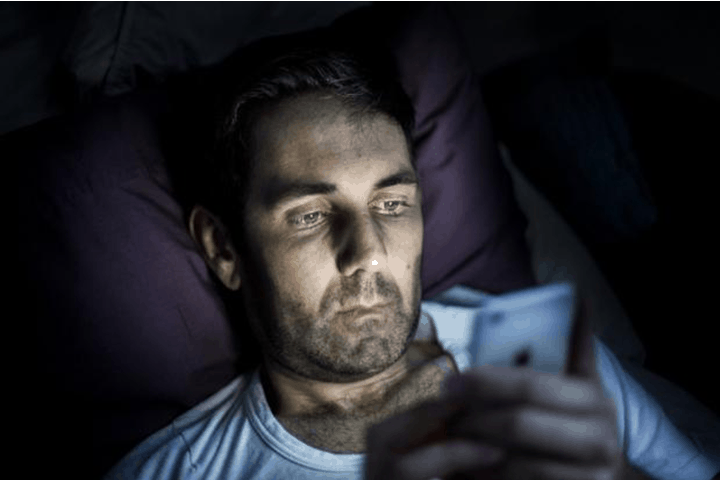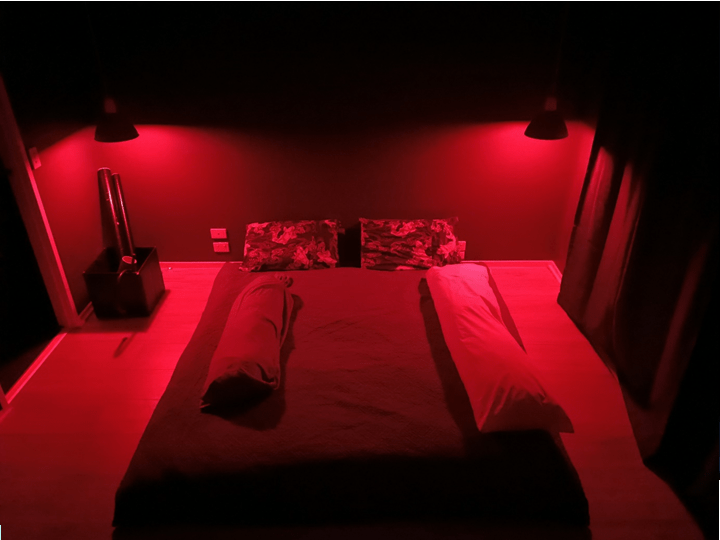Sleep is the antithesis to the modern lifestyle. Every day for some 16+ hours our physical senses are loaded up with input for our bodies and minds to interpret and action. From the light of the sun, to the gentle hum of the distant freeway, we are perceptive of what is both at our fingertips and as far as 149,600,000 kilometres away (the sun). We might also consider the awareness of our internal physiology, are you hungry? How do you know? It could have something to do with the millimoles of glucose present per litre of blood in your body. We are constantly being kept ‘up to date’ with what is going on within and around ourselves.
A Sensory Journey
Now let’s look at a typical days start in the life of some of our senses. Your eardrum vibrates from the incoming sound waves from your alarm clock, the drum sends these vibrations to three tiny bones in the middle ear. Your instrument has been played and it resonates throughout your system. Your eyes open, your pupils adjust to allow more light in, a large breath is drawn in to oxygenate the system and prepare for movement. Receive, interpret, prepare, execute, adjust. The ripple effect of receiving and registering sound.
Fast forward to night time. The pace of the day has slowed, the light has darkened, we could be resting and digesting here. However, instead of disengaging from our environment and turning our eyes and our thoughts inward, our whole neck, chest face and eyes are lit up by a bright blue light. The muscles of the aforesaid shorten and engage to sustain a position ‘best’ to prop ourselves up to view our device. From the surface of our skin through to our muscles and bones we are exposed to sensory information, so we go ahead and institute an orthostatic position and a certain mental alertness that we can most easily adopt to receive the incoming data. Like a baseball catcher, you are right in front of the pitcher with your glove open, ready for the ball to come in. How many strike-outs are needed before you can return to the dug-out will depend on how engrossed you become.

Staying connected
I myself have picked up my phone to check a notification, only to look up and be astounded to realize that 30 minutes have since past. Scenarios such as this have happened to me countless times.Research is starting to show that this information is purposely presented in such a manner that it keeps the time flying and it keeps us coming back for more.
Neuroscientists are studying the effects of social media on the brain and finding that positive interactions (such as someone liking your tweet) trigger the same kind of chemical reaction that is caused by gambling and recreational drugs. According to an article by Harvard University researcher Trevor Haynes, when you get a social media notification, your brain sends a chemical messenger called dopamine along a reward pathway, which makes you feel good. Dopamine is associated with food, exercise, love, sex, gambling, drugs … and now, social media. Variable reward schedules up the ante; psychologist B.F. Skinner first described this in the 1930s. When rewards are delivered randomly (as with a slot machine or a positive interaction on social media), and checking for the reward is easy, the dopamine-triggering behaviour becomes a habit.
KELLY MCSWEENEY This is Your Brain on Instagram: Effects of Social Media on the Brain Mar 17th 2019.
This article however is not about phones, Ipads, TV’s nor laptops. No one piece of technology or application need be scrutinised vilified here. In fact, technology does not be painted red with horns and a tail. As I type these very letters I am using technology to communicate with you. We immensely benefit from technology every day of our lives.
Our applications and devices allow us to stay connected, up to date, and easily allow us to communicate instantaneously on a global level. As Hurricane Katrina ravaged communities in the United States or as a sleeping giant erupted on a popular tourist island in New Zealand -and even most recently with a global pandemic, we have majorly benefited from having access to vital information at our fingertips. The need to be connected and up to date does however need to be kept in check with one of our other, most primal requirements: sleep.
When it comes to fulfilling basic biological needs of all mammals and by extension, building and sustaining good physical and mental health, establishing clean sleep hygiene is of paramount importance.
Sleep is a fundamental biological need, and (along with exercise and nutrition) it forms the foundation of health and wellbeing. Yet, as the Royal Australasian College of Physicians stated, the importance of sleep is often overlooked. It is concerning that four in every ten Australians are not getting adequate sleep and this indicates there is a need for a greater focus to be placed on sleep health.
Royal Australasian College of Physicians (RACP), Submission 122, p. 2.
What is sleep hygiene?
A hygienic sleep environment is not as the name would sound. This is not about washing your hands before bed or vacuuming the floor.
Sleeping hygienically, rather,involves sleeping in an environment that is conducive with rest and recovery.
As the sun sets and darkness encroaches, biological processes are triggered to help transition us to sleep. From the slowing of our respiration rate, to a reduction of blood pressure and the decreasing of our heart rate, our systems should start to cool down here. Most notably, dopamine levels diminish whilst melatonin is secreted. The latter is a hormone which is produced by the pineal gland at night and serves as a time cue to our biological clock and promotes sleep anticipation.
Exposure to Artificial Light at Night (ALAN) has been shown to increase dopamine and supress melatonin production – this is in direct opposition to what your body is trying to do to get you to sleep!
Optimally when the sun goes down, the devices go down. Phones, TVs laptops and even the lights that you have on in your house can all affect the quality of your sleep. As your sleep time approaches, ALAN exposure should be reduced.
Sleep hygiene tips:
Tip 1: Start by setting a cut-off time for phone/tv usage, this could start at 30 minutes prior to moving to the room that you sleep in. The further that you can extend this time out, the greater benefits it will have on your sleep quality. For yourself or your clients, this can be programmed just like progressive overload:
Week 1: 30 minutes on week nights
Week 2: 45 minutes on week nights
Week 3: 45 minutes on week nights
Week 4: 60 minutes on week nights.
Tip 2: Make use of scented candles or an air diffuser. Lavender, valerian and bergamot all have been shown to induce relaxation, with bergamot essential oil being used in an aroma therapeutic or topically having shown the ability to reduce blood pressure.
Tip 3: Block the light. Dark, quiet and cool rooms make for the most optimal sleeping environments. Using block out curtains on windows where light gets in (my fiancé and I have roller shutters on the outside of our room and block out curtains on the inside – the combo works great!) or invest in a sleep mask for where the above is not possible.
Tip 4: Release the tension. Take some myofascial release tools to your bedroom. Get on the floor and roll it out. Your lymphatic system will thank-you. Your Musculo-skeletal system will thank-you. Your body will thank-you – and you may just find that you get a better sleep.

Tip 5: Breathe. With the externalities blocked – phone off, room darkened, you can now begin to detach from your external environment and turn your focus inward. Deep cyclic breaths from the tail bone to the top of your head. This focused breathing work will help push oxygenated blood around your system, helping induce a state of total relaxation.
Final thoughts/conclusion
With most of the emphasis often placed on ‘training’ and ‘intensity’ in the fitness industry, rest and recovery are often overlooked. Not only does the quality and quantity of your sleep dictate how well you will perform within your fitness endeavours, it has a major influence on general health and quality of life.
Author: Ben Gunn
For for Newsletter

